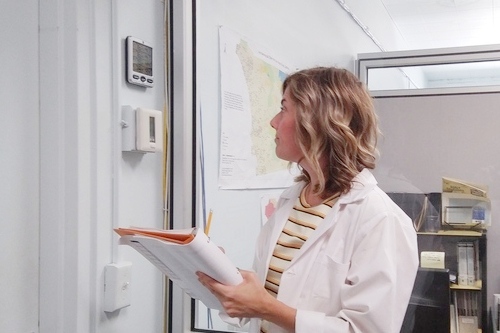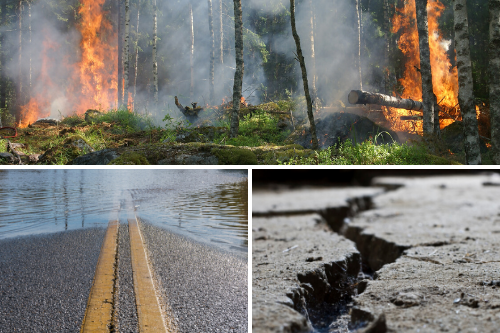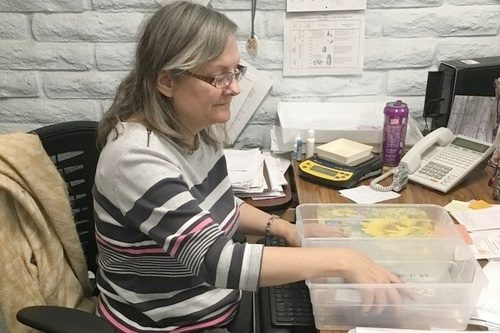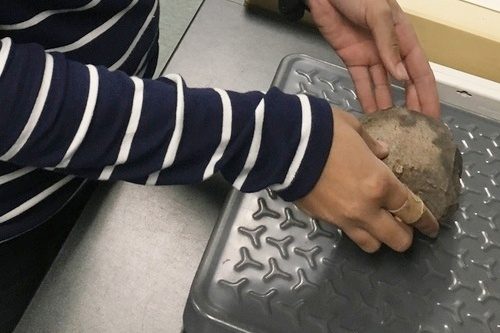
From Inside the Vaults: Temperature and Relative Humidity Monitoring
From Inside the Vaults is a monthly blog that gives insight into best practices for collections stewardship, curation, and archaeological collecting institutions.
How Should Archaeological Collections Be Stored?
Preventative conservation, as we’ve discussed this year, includes many different tasks that are performed by Collections Managers to keep collections and storage spaces safe. Monitoring temperature and relative humidity levels in collections spaces and places where artifacts are housed is an incredibly important part of preventative conservation. Not all collections are the same, so it is important to take this into consideration when researching temperature and relative humidity monitoring for your artifacts.
Levels of Climate Sensitivity in Archaeological Collections
Archaeological collections are usually made up of many different types of materials. The National Park Services Museum Handbook recommends organizing archaeological collections by site and material class. Based on these NPS guidelines, there are three categories the collections lab considers when organizing collections: Artifacts that are considered negligibly climate-sensitive materials, those that are climate-sensitive materials, and collections that are significantly climate-sensitive materials. The bulk of SDAC’s collections are considered negligibly climate-sensitive, which reduces the risk of damage due to fluctuating temperatures and relative humidity because of the stability of the artifacts.
How Temperature and Relative Humidity Are Monitored
Having a preservation plan in place is pertinent to any collecting institution. At the SDAC, there is a Temperature and Relative Humidity Monitoring program that helps ensure the safety of collections housed at the Center. In order to record existing environmental conditions throughout the building, temperature and RH (relative humidity) must be measured and recorded with instruments designed for that purpose. The focus of most monitoring programs is on storage spaces, but keeping track of the Museum gallery and staff spaces as well, provides a better overall picture of conditions throughout the entire building. All of the collections spaces and vaults are equipped with temperature and RH controls. These spaces are monitored by Center staff each day. Weekly, this data is entered into a graph where the RH and temperature are tracked. Once enough data is collected (usually one to two years after the monitoring program is put in place), quarterly reports can be produced that allow for long-term observation. Annually, the Collections Manager compares data from previous years to see if adjustments and improvements need to be made throughout the building. By keeping the RH in these spaces above 30% and below 65%, and temperatures between 50-75 degrees Fahrenheit, collections can remain stable and the rate of deterioration is lessened greatly. If RH levels rise above 65%, the chance of deterioration may become heightened. Additionally, the higher temperatures rise, the faster deterioration of artifacts will occur.
Best Practices
It is recommended that one staff member records, monitors, and analyzes the environmental conditions in collections spaces. Even so, there should be a backup staff member in place to fill in when needed so that data is being recorded constantly. Because temperature and RH of the vaults and Museum galleries are recorded and monitored daily, the collections department is able to analyze and mitigate any problems caused by fluctuations or increases.
The collections department is able to make improvements to collections spaces because of the data collected during daily monitoring. Looking for ways to improve climate conditions for the Center’s lab, library, vaults, and Museum galleries is always a top priority.
By Jessica McPheters, Collections Manager




